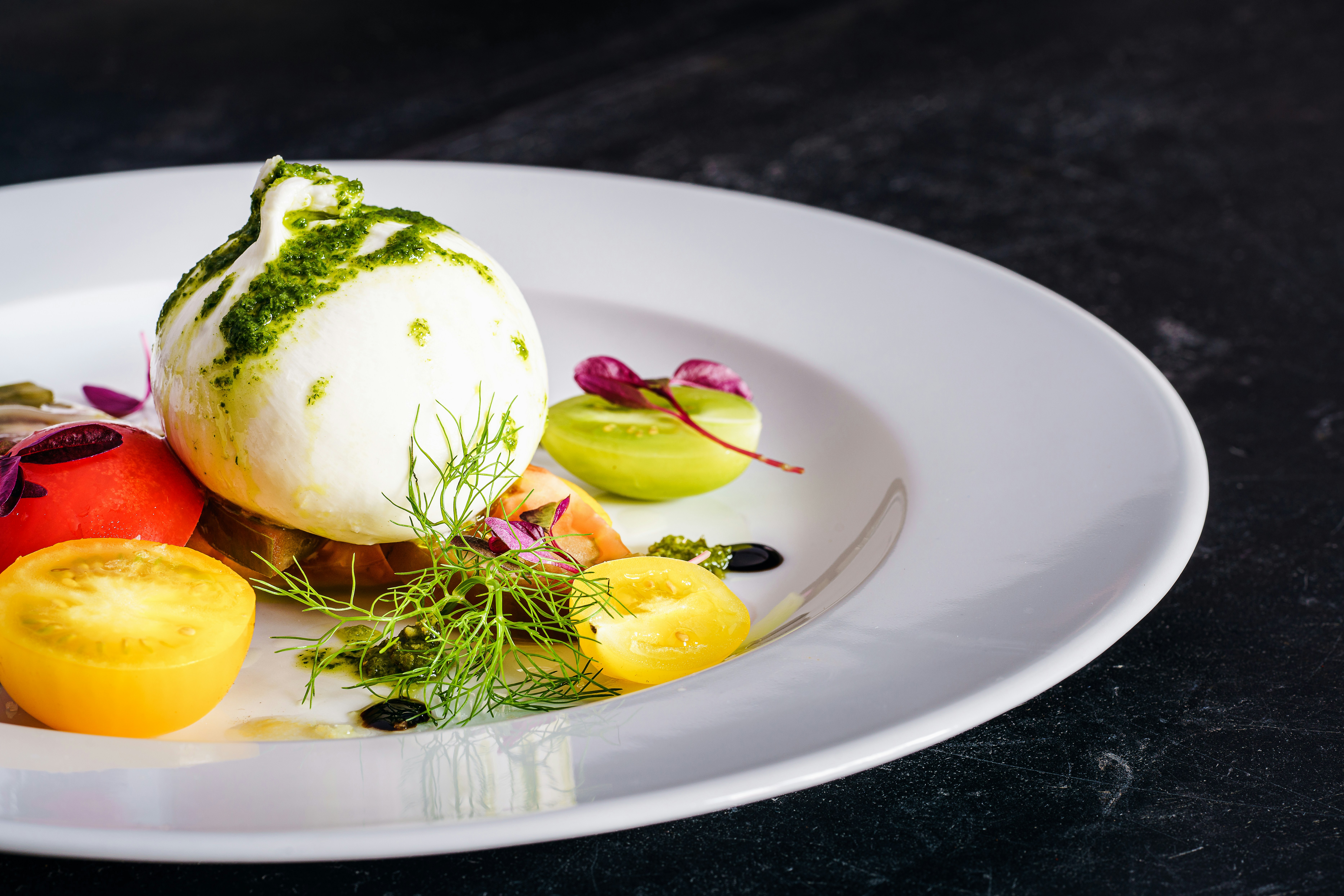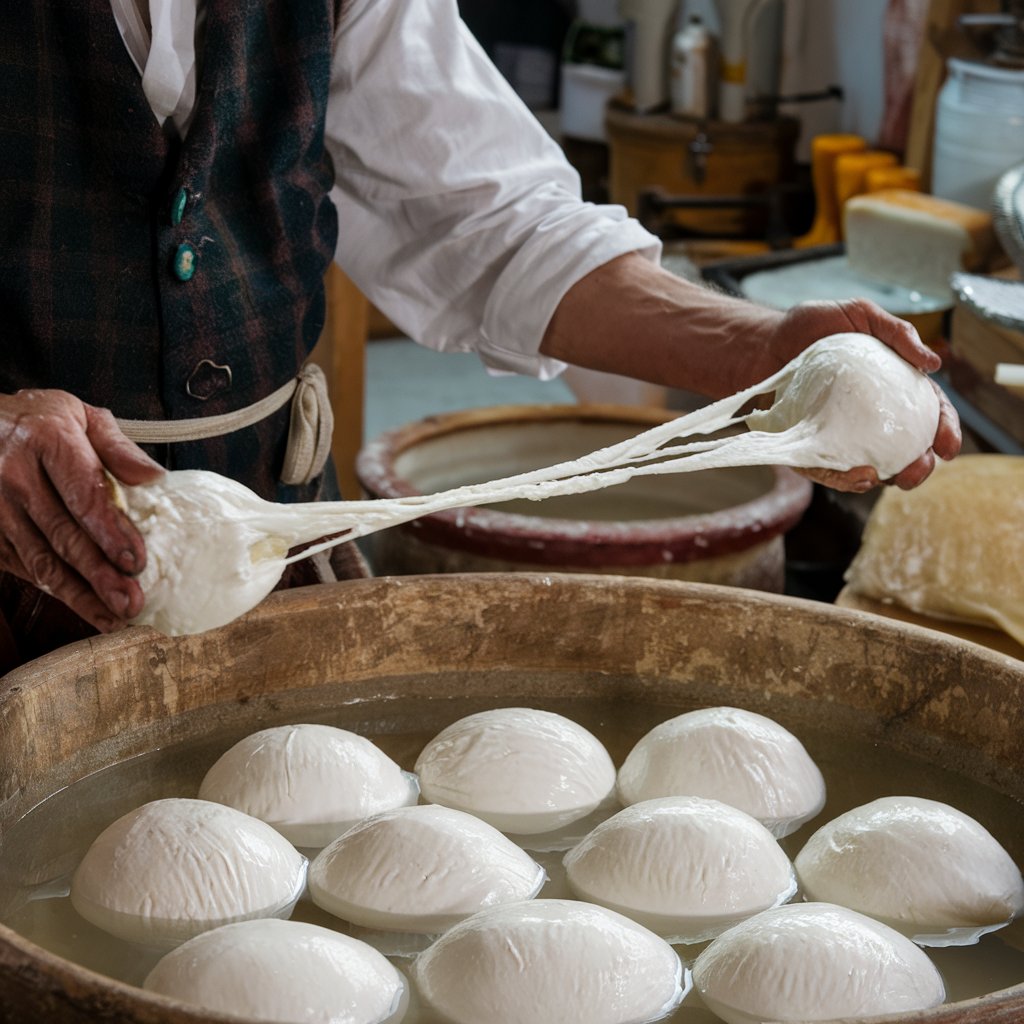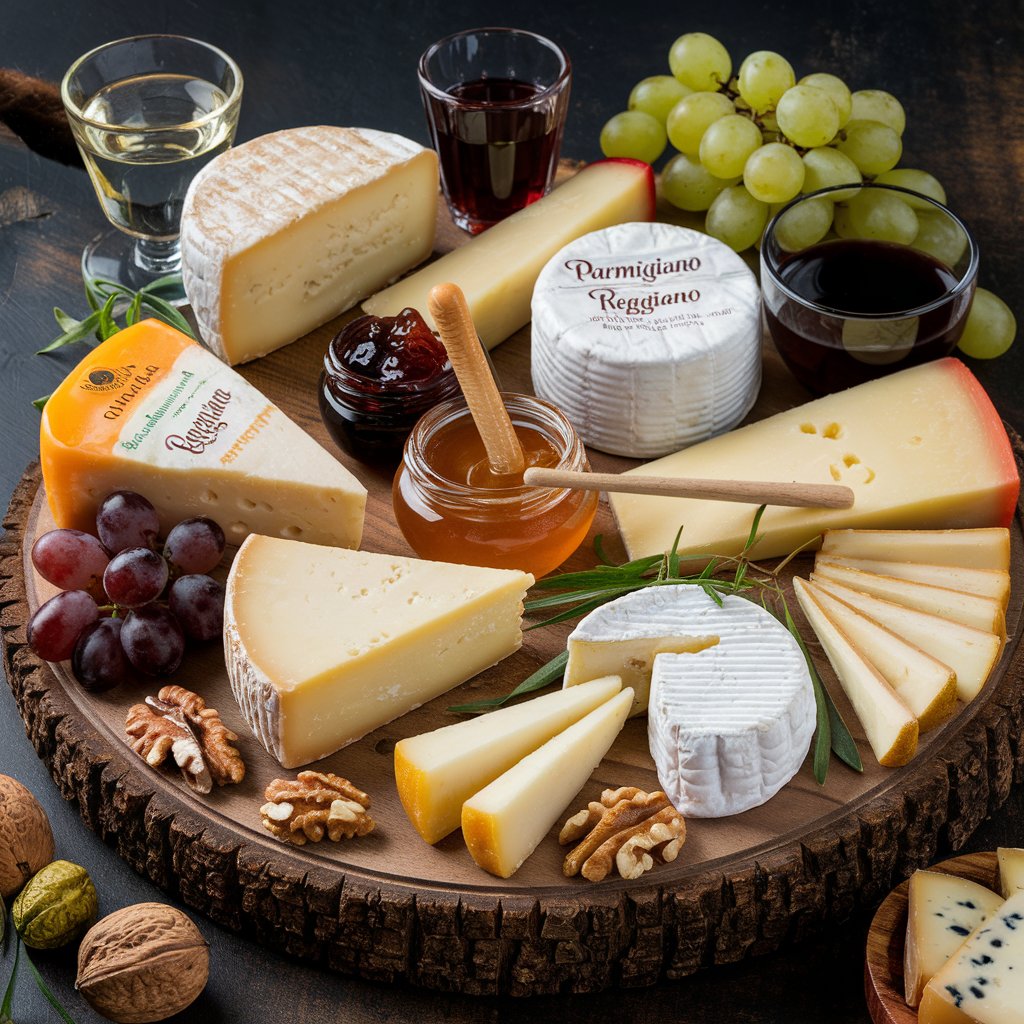
Decoding Italian Cheese: A Guide to Varieties, Regions, and Pairings
Key Takeaways
| Italian Cheese Facts | Details |
|---|---|
| Number of Italian DOP cheeses | 54 protected varieties |
| Most produced Italian cheese | Parmigiano Reggiano (3.7 million wheels annually) |
| Most exported Italian cheese | Grana Padano ($460 million in exports) |
| Most consumed abroad | Mozzarella |
| Oldest documented Italian cheese | Pecorino Romano (dating back to ancient Rome) |
| Region with most cheese varieties | Lombardy (12 DOP cheeses) |
Introduction to Italian Cheese
Italian cheese represents one of the world's most diverse dairy traditions, with over 600 varieties produced throughout the country. From the alpine pastures of the north to the Mediterranean hills of the south, each region offers distinctive cheeses that reflect local environments and traditions.

The history of Italian cheesemaking dates back thousands of years, with ancient Romans documenting methods still influencing modern practices. Today, Italian cheese production generates approximately €4.1 billion annually and employs over 100,000 people across the country.
What distinguishes Italian cheese is its connection to regional identity. Unlike standardized products, traditional Italian cheeses maintain strong ties to their geographic origins, with flavors reflecting local terroir. This diversity extends to milk sources – cow's milk dominates northern regions, while southern Italy and the islands favor sheep's milk.
The Italian Cheese Classification System
Understanding Italian cheese requires familiarity with its classification systems. The most important is the DOP (Denominazione di Origine Protetta) designation – a European Union certification guaranteeing authentic production methods, specific geographic origins, and traditional ingredients.
Italian cheeses are also categorized by milk type:
- Cow's milk (Vaccino): Produces mild, buttery cheeses like Fontina
- Sheep's milk (Pecorino): Creates tangy cheeses including Pecorino Romano
- Buffalo milk (Bufala): Yields creamy varieties, notably Buffalo Mozzarella
- Goat's milk (Caprino): Offers sharp flavors found in cheeses like Caprino Lombardo
Texture provides another classification metric:
- Fresh (Fresco): Soft, moist, usually unaged (Mozzarella, Ricotta)
- Soft (Molle): Creamy interior, sometimes with edible rind (Taleggio)
- Semi-hard (Semi-duro): Firm but can be sliced (Provolone)
- Hard (Duro): Very firm, often granular, extensively aged (Parmigiano Reggiano)

Northern Italian Cheese Varieties
Northern Italy's cooler climate creates ideal conditions for dairy farming. Parmigiano Reggiano, often called the "King of Cheeses," stands as the region's most famous product. Made from partially skimmed cow's milk and aged for a minimum of 12 months, it offers complex nutty, fruity, and savory notes.
Lombardy produces another classic: Gorgonzola. This distinctive blue cheese comes in two varieties – Dolce (sweet) and Piccante (sharp). The milder Dolce version ages for 2-3 months, while Piccante ages 3-6 months, resulting in a firmer consistency and more pronounced flavor.
Other notable northern cheeses include Asiago from Veneto, Fontina from Valle d'Aosta, and Taleggio from Lombardy. These cheeses balance traditional methods with modern quality control, ensuring distinctive regional characteristics while meeting contemporary standards.
Central Italian Cheese Varieties
Central Italy's cheese tradition differs from the north, with sheep's milk predominating over cow's milk. The rolling hills of Tuscany, Umbria, Lazio, and Marche provide excellent grazing territory for sheep, resulting in distinctive pecorino cheeses.
Pecorino Romano stands as the region's most internationally recognized cheese. This hard cheese undergoes at least five months of aging, developing a sharp, salty profile ideal for grating. Ancient Romans prized this cheese for its durability, with historical records showing it was standard rations for Roman legionnaires.

Pecorino Toscano offers a gentler alternative to Romano's intensity. Fresh Pecorino Toscano presents a soft texture with mild, grassy notes, while aged versions develop firmer textures with more pronounced flavors.
Southern Italian Cheese and Island Varieties
Southern Italy produces some of the country's most distinctive cheeses. Buffalo Mozzarella (Mozzarella di Bufala Campana) represents the region's most famous contribution. Produced primarily in Campania using Italian Mediterranean buffalo milk, this fresh cheese undergoes a "pasta filata" (stretched curd) process. Authentic Buffalo Mozzarella offers a porcelain-white appearance and perfect balance between sweetness and tanginess.

Caciocavallo, whose name means "cheese on horseback," refers to its traditional aging method – hung in pairs over wooden rods. This stretched-curd cheese appears throughout southern regions including Calabria and Sicily, developing complex flavors ranging from milky when young to sharp when mature.
Other significant southern cheeses include Burrata from Puglia, Provolone del Monaco from Campania, and Ragusano from Sicily.
Italian Cheese Pairings
Pairing Italian cheeses requires understanding how their flavors interact with other foods and beverages. Wine and cheese pairings represent Italy's most celebrated combinations, with regional food traditions often developing cheese and wine simultaneously.

Classic pairings include:
- Parmigiano Reggiano + Lambrusco
- Gorgonzola + Passito di Pantelleria
- Buffalo Mozzarella + Falanghina
- Pecorino Romano + Frascati
Beyond wine, Italian tradition offers numerous complementary pairings:
- Fresh cheeses with tomatoes, olive oil, and basil
- Soft ripened cheeses with fresh fruits and crusty bread
- Blue cheeses with honey, walnuts, and ripe pears
- Hard cheeses with balsamic vinegar and fresh fruits
Cooking with Italian Cheese
Italian cheese transforms ordinary dishes into extraordinary culinary experiences. Traditional Italian cooking leverages cheese characteristics for specific applications:
- Risotto: Finished with freshly grated Parmigiano for creamy consistency
- Pasta Carbonara: Traditional versions use Pecorino Romano's sharp character
- Pizza: Relies on Mozzarella's unique melting properties
- Tiramisu: Showcases Mascarpone's rich, creamy texture
When cooking with Italian cheese, remember that each type requires specific techniques. Hard cheeses should be added at the end of cooking, while fresh cheeses need minimal heat to prevent toughening.
Frequently Asked Questions
What is the difference between Parmigiano Reggiano and Parmesan?
Parmigiano Reggiano is a protected designation cheese made in specific Italian regions following strict regulations. "Parmesan" is a generic term used for similar cheeses made anywhere.
Is Italian cheese pasteurized?
Some traditional Italian cheeses use raw milk, while others use pasteurized milk. DOP regulations specify which process must be used for protected cheeses.
What's the best way to store Italian cheese?
Store most Italian cheeses wrapped in specialized cheese paper or parchment paper in your refrigerator's vegetable drawer. Bring to room temperature before serving for optimal flavor.
Can I eat the rind on Italian cheese?
This depends on the specific cheese. Natural rinds on cheeses like Parmigiano are edible, while waxed rinds or those treated with chemicals should be removed.
What Italian cheese is best for pizza?
Mozzarella (particularly Fior di Latte or Buffalo Mozzarella) is traditional for pizza, though regional variations may use Provolone, Caciocavallo, or other local cheeses.
How can I tell if Italian cheese has gone bad?
Look for unusual mold (except on blue cheeses), ammonia smell, or slimy texture. Some cheeses naturally develop stronger aromas as they age without indicating spoilage.
What's the difference between buffalo mozzarella and regular mozzarella?
Buffalo mozzarella is made from the milk of water buffaloes, offering a richer flavor and creamier texture than regular mozzarella (Fior di Latte), which uses cow's milk.
Which Italian cheeses are lactose-free?
Aged hard cheeses like Parmigiano Reggiano and Grana Padano contain minimal lactose due to their long aging process, making them suitable for many lactose-sensitive individuals.